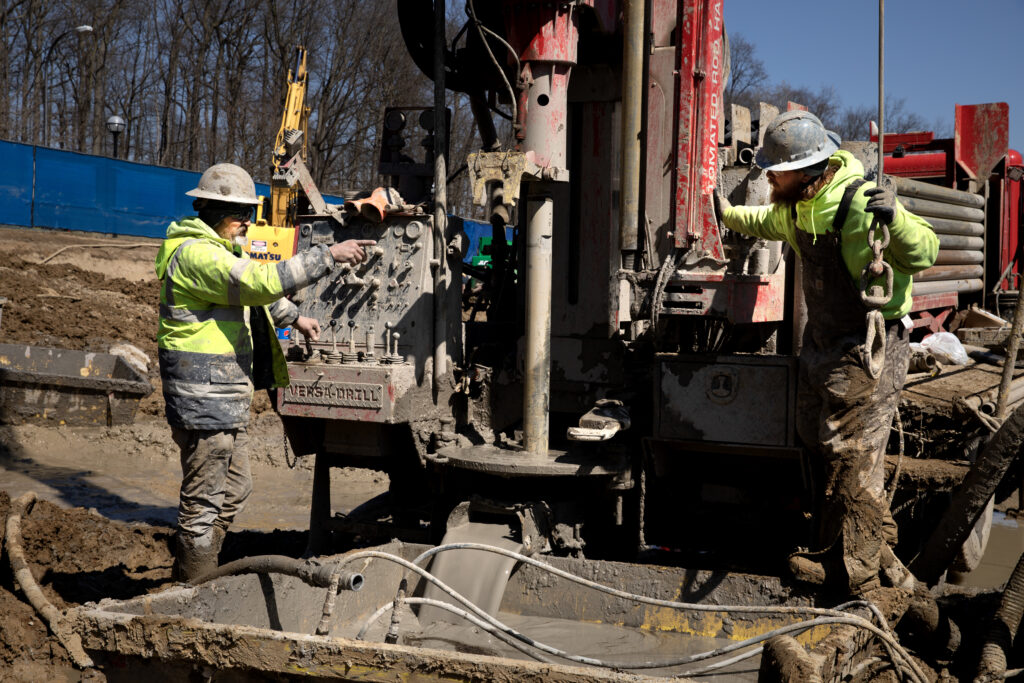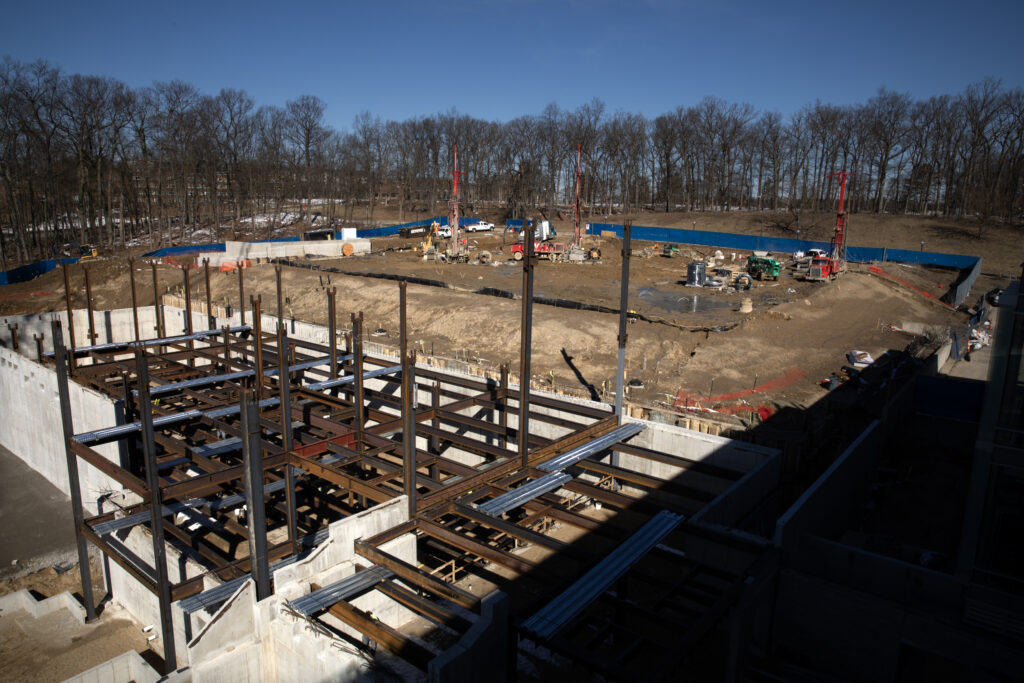Drilling for geo-exchange system that will heat and cool Leinweber CSI Building near complete

The drilling next to the Bob and Betty Beyster Building on North Campus is almost done. In process since January 16, the work has been a part of the creation of the Hayward Street Geothermal Facility, the first major geo-exchange facility at the University of Michigan.
The system will heat and cool the Leinweber Computer Science and Information Building, which will be the new home for the School of Information and will provide expansion space for the Computer Science and Engineering Division of Michigan Engineering. The Leinweber Building is under construction and is planned to be ready for occupancy in 2025. The Geothermal Facility is on schedule to support startup of the building’s cooling system in the Summer of 2024 and its heating system in the Fall of 2024, once the building is enclosed.
More information about the Leinweber CSI Building can be found at the Leinweber Building website. Live streams of the building construction site can be viewed here. At the time of publication, the geothermal field can be seen behind the building construction in the view facing north.
Because of this system, the Leinweber CSI Building will be all electric, and the first large-scale university building to not rely on natural gas for heating. It will be heated entirely by the geo-exchange system, and partially cooled by the system. Some cooling will come from the North Campus Chiller Plant, which is an all-electric facility that produces chilled water to cool many of the buildings in the academic core on North Campus. The Hayward Street Geothermal Facility represents an important step as the university makes continued progress toward university-wide carbon neutrality goals.
As a part of the project, construction workers using specialized machines have drilled to depths in the range of 700 feet below the surface to install piping for the geo-exchange heating and cooling system. Once operational, the system will use the Earth’s constant subsurface temperature as a low-grade energy source, acting as a heat sink in the summer and as a low-grade heat source in the winter, thus maximizing energy efficiency.
Additional features of the project include:
- Approximately one hundred borings, spaced between 19 and 20 feet apart with underground piping to a depth of about 700 feet, across an area approximately two-thirds the size of a football field.
- A 4,000-square-foot heating and cooling auxiliary building located near the borings, which could interconnect with subsequent geo-exchange systems as they are planned and built.
- An enclosed-loop system, meaning the project will have no contact with groundwater or soils.

The President’s Commission on Carbon Neutrality (PCCN) has recommended a transition to geothermal systems for heating and cooling campus buildings to reduce carbon emissions and eventually achieve carbon neutrality, and the university has planned a phased campus-wide transition to geothermal heating and cooling systems, beginning with the system that will heat and cool the Leinweber CSI Building. It is expected that the Hayward Street Geothermal Facility could be interconnected with future systems that might be built on North Campus.
U-M’s carbon neutrality efforts encompass direct campus emissions, purchased electricity and extended-impact sources. The university is committed to wholly eliminating its direct emissions by 2040. In line with recommendations from the PCCN, installing geo-exchange district energy systems is a central strategy toward this goal.
The new geothermal facility will serve as an initial project as the university continues to evaluate additional geo-exchange heating and cooling opportunities on campus. U-M also is launching a utility master planning process on North Campus to investigate how to decarbonize the campus’ heating and cooling infrastructure.
 MENU
MENU 
